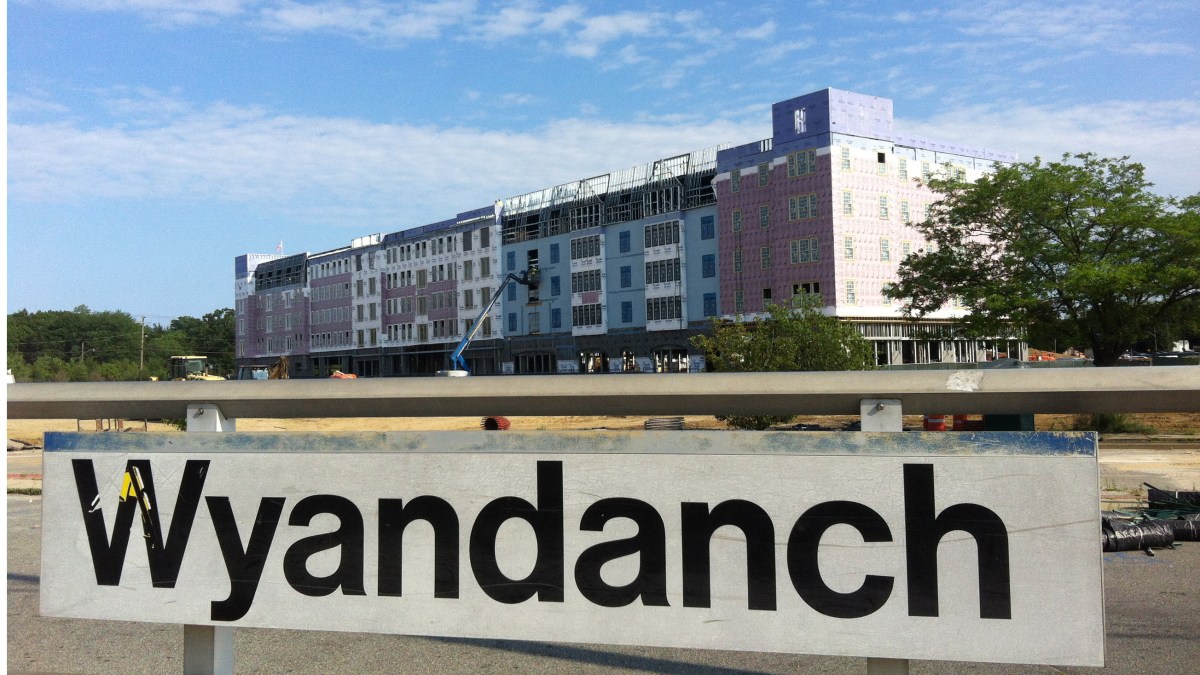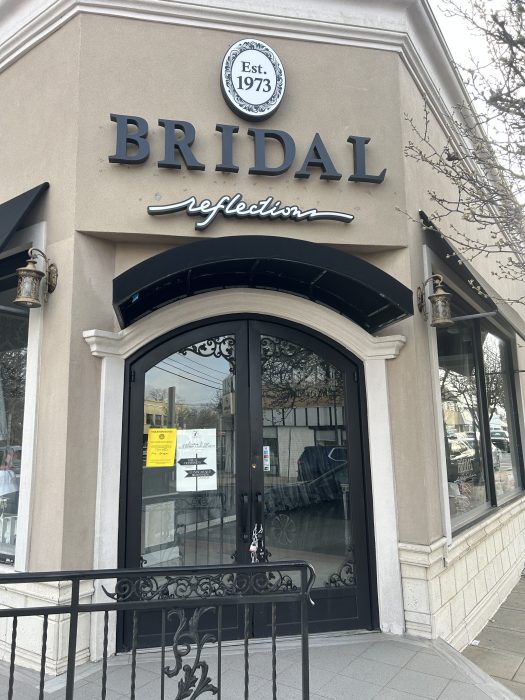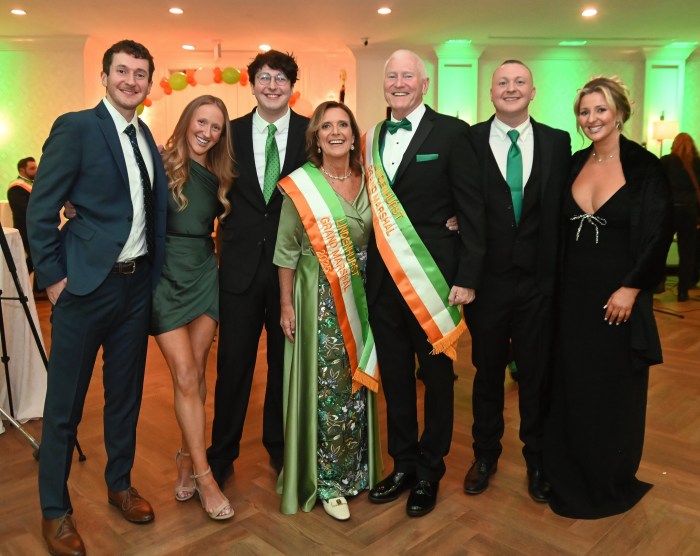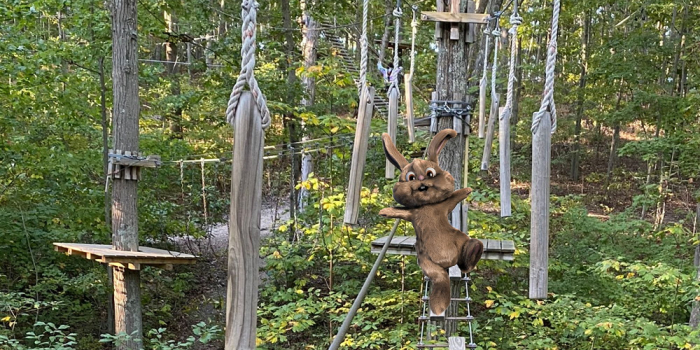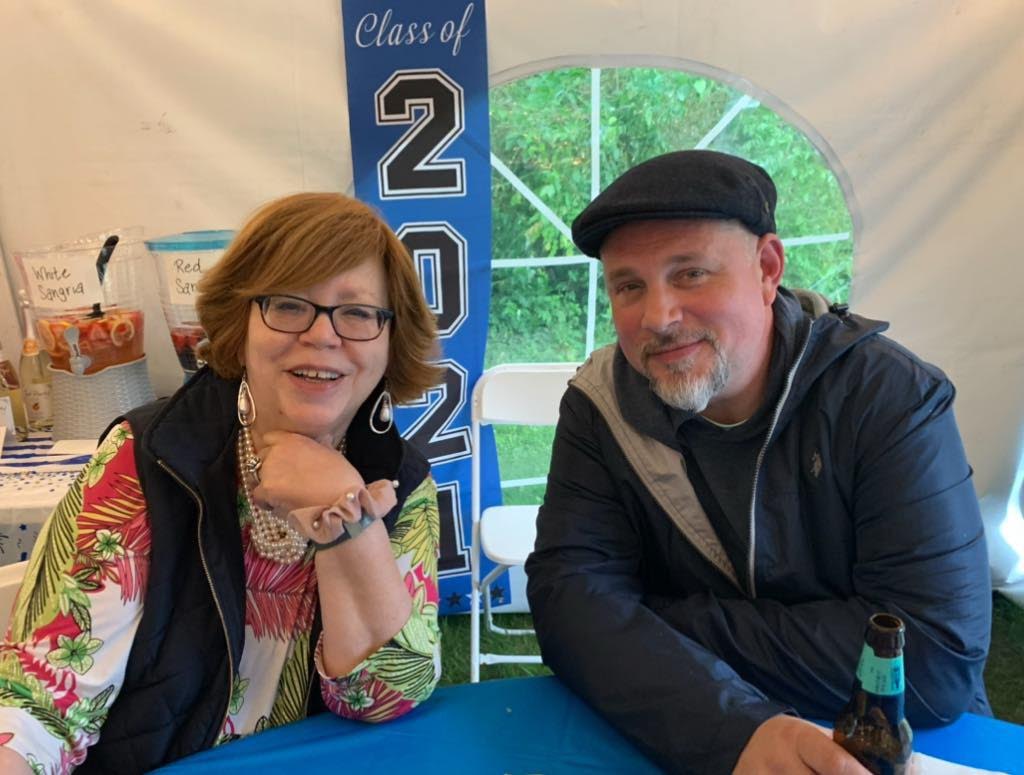One bullet to the head and he was gone.
But 30-year-old Desi Kingsberry, a sanitation worker and aspiring rapper, lives on in lyrics he wrote about making money, bragging rights, succeeding in life without needing anyone else.
“Now I know that everything in life adds up and makes perfect sense, so when you waste time there’s no need to ask where it went,” he rapped. “And they say you can get a job if you stand, on the corner ask for 50 cent…We lookin’ at the world through a real nigga’s eyes.”
He was killed outside his family home on State Avenue in Wyandanch at 4 a.m. on Sunday, Sept. 29, 2013. The reports are limited. Suffolk County police are silent. But some suspect gang violence. Others just want to see justice.
Torey Warren of Amityville was arrested almost a month later, pleaded not guilty to second-degree murder and was denied bail from county jail while awaiting trial in Riverhead, but there is no confirmed account of why Warren would shoot Kingsberry. His death is an example of violence with which his neighbors are all too familiar.
Wyandanch is home to 11,647 residents, many of them commuters who leave the community for work—some using the rundown Long Island Rail Road train station. According to the U.S. Census, 14 percent of residents were living below the poverty rate—double the Long Island rate of nearly 7 percent, but slightly less than the New York State and national rate. Gov. Andrew Cuomo last year called Wyandanch “one of the most economically distressed communities on Long Island.”
But it is the strong gang presence that is troubling the locals, many of whom refuse to walk down the hamlet’s main drag, Straight Path, after dark. According to locals, drug dealing can be seen day or night and the sound of gunfire is not unfamiliar. Local chapters of major gangs, such as the Bloods, Crips and MS-13, have established themselves in Wyandanch.
The community has the fourth-largest concentration of gang members after Brentwood, Central Islip and Bay Shore, according to a 2012 report by the Suffolk County Criminal Justice Coordinating Council.
Residents think twice before walking past Davidson Street or Straight Path BP gas station on a late night. They are tired of seeing the purse snatching, late-night shootings and parking lot drug pushing. Many will stop to talk of the late-night gang presence before mentioning the potholed streets.
There has been a push for the past decade to turn Wyandanch around. Suffolk County Executive Steve Bellone, when he was Babylon town supervisor from ‘02 to ‘11, spearheaded the Wyandanch Redevelopment Project, coined Wyandanch Rising. The project installed a new sewer system, repaved Straight Path and aims to build two new apartment buildings that will have 190 units. The $500-million project is backed by federal funds, state tax credits, grants and low-cost financing, officials said. It is expected to enhance the commercial business district, while creating an affordable, transit-oriented development.
For many Wyandanch residents, however, a face-lift is not enough to cure the sickness. Some believe there needs to be a concerted overhaul of the population, removing all troublemakers and gangs, and only then can the hamlet focus on rebuilding the dilapidated road and buildings. Police and town officials are trying to counter this mindset—to restore hope to a hamlet that has been plagued by the disease of desperation. It has become a battle to restore hope to Wyandanch and to revive the spirits of a divided population.
“This is Long Island,” Greta Guarton, executive director of the Long Island Coalition for the Homeless, said while driving through Wyandanch during the annual homeless census. “Look at the poverty. It’s one of the most affluent places in the country it’s got pockets like this.”
STREET STRUCK
To the side of the construction is Straight Path Grocery, a daily haunt for some of the local unemployed. It’s in a perfect position for people watching and the daily traffic that gets caught at the intersection between Straight Path, Long Island Avenue and the train station.
Standing outside the store, white T-shirt, jeans, hands in his pockets, is Ben Woodson. At 21, the Wyandanch Memorial High School graduate has no job and concedes that he isn’t trying hard enough to find one. He lives with his parents and passes the days with friends.
But none of those friends are gang members.
“All I hear is people going to jail, getting shot,” he says as he watches cars stream by, faces staring out at him. “I don’t have no records, I’m a clean guy. That’s the way I like it.”
Some drivers pull over to talk, to ask for a light. Woodson acknowledges them with a wave or briefly going over to talk. A young man, wearing a white hoodie and green shoes rides a bicycle on the sidewalk. Woodson nods in his direction and says they went to school together.
The bicyclist joined a neighborhood gang, Niggas In Charge, or NIC, as locals call it. Woodson did not. Now they don’t talk.
NIC started at Wyandanch Memorial High School in 2008 by a small founding group, according to Suffolk County police gang investigators, who consider it the most violent gang in the area. Police say NIC recruits the youngest members, most of whom are between the ages of 16 and 24, some still in high school. Some police consider it a transitory gang, because members often switch to one of the more established gangs—Crips, Bloods or MS-13—when they reach their early 20s.
The biggest gangs, which have tentacles nationwide, have become engrained in the Wyandanch culture, police, residents and gang members say.
“After a while you find out it’s a way of life,” a member of the Bloods who asked not to be named said from behind the glass of a visiting booth at county jail. “When you first become a Blood, you’re family. When shit hits the fan, it’s time to do work.”
In gang terms, “work” means committing acts of violence, often retaliating against rivals.
The inmate was jailed for violating his probation—he was caught with heroin—and has been in and out of jail since he was 17, mostly for supporting Bloods members in their inter-gang fighting.
He joined the gang at age 15 in his native Haiti after one of the Bloods befriended him. His life since has been a timeline of drugs, arrests, beatings and shootings. He was once arrested and charged with attempted murder of an MS-13 member in East Massapequa, but said he “beat the trial” because the police did not read to him his rights upon arrest and did not have a warrant to search his house.
Now the 21-year-old inmate has “a price on his head”—a colloquial term for retributive violence—because he didn’t come through for a fellow Blood right before he returned to jail last summer. He was released after the New Year, but for him and many gang members alike, there are few options to leave that lifestyle behind.
“I don’t believe there is a way out, whether it’s being Blood, selling drugs, whatever it is,” the Bloods member said.
He started dealing at 18, because he said that although the attempted murder charge was a youth offense and not on his record, a simple Internet search of his name would tell a prospective employer everything.
So, he turned to the easier option. At first it was selling weed, or whatever he could get his hands on. Soon people were asking for harder drugs—pills, heroin, cocaine. He developed a taste for the business and the money.
“Drugs came, friends came, girls came up on you more,” he said. “Once one person knows, the rumor spreads and that’s how you get your name out there.”
Before long, it was a full time job and he was making an estimated $9,000 weekly by the time he was 19. But it was the drug dealing that brought him back to jail. There remain few options once he gets out again.
“Loyalty is what gets me into a lot of issues,” he said, talking about his willingness to help out a member when called upon. “I’ll forever be there for them, I’ll forever be Blood.”
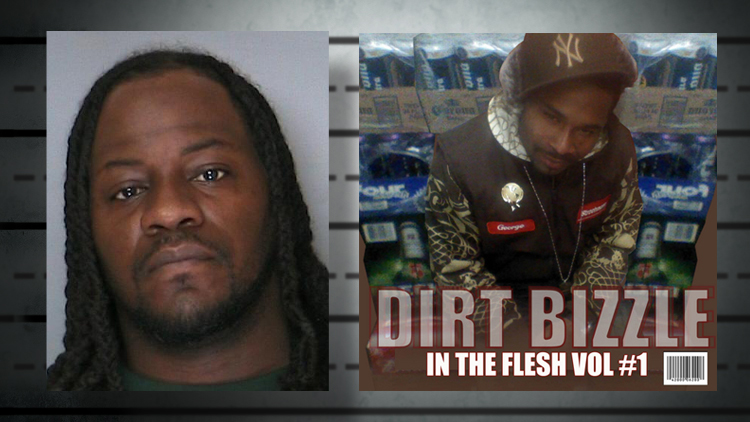
TAKING IT TO THE STREETS
It is this mindset that has been bothering Suffolk County Deputy Police Commissioner Risco Mention-Lewis ever since she took the position in September 2012.
The former Nassau County assistant district attorney would spend time on street corners with the high school dropouts, in the community courts and in the schools to teach the youth virtues that they hadn’t learned.
“I used to call them ‘lost boys’ and now I call them ‘the chosen ones,’ ” she said from her office at police headquarters in Yaphank, from where she is coordinating her role in turning Wyandanch around.
Mention-Lewis uses the term “chosen ones” to point out the potential and hope that can still be found in the young men and women associating with gangs. She also likes the word “imposter,” saying that it reveals the mask that a lot of youth put up in order to survive or look tough on the streets.
Mention-Lewis walked across her office to a bookshelf and pulled down a photo of a girl about 9-years-old, a small smirk on her young face.
“This is my imposter,” said Mention-Lewis. She grew up in the projects of Roxbury, Mass., which also has a gang presence. She would spend her youth with much older youth, following them around the buildings.
“You don’t know what you’re doing, you’re just following,” she said.
Her mother saved up and bought a house in Cape Cod, removing Mention-Lewis from the environment. But it is her upbringing and experience as a prosecutor that taught her how to combat the imposters and show gang youth that they are in fact chosen ones. The biggest reason for hopelessness within gang members and youth is disconnection, she said.
“A trauma occurs that parents didn’t know how to process,” Mention-Lewis said about the gang youth. “The child becomes the adult and is then walking the streets.”
To combat this, Mention-Lewis is replicating a solution she perfected in Nassau to change gang culture from inside. It begins with the Council of Thought and Action (COTA)—a program she started in Hempstead in 2008. The community-based intervention identifies the youth who are struggling as the chosen few, recognizing those who are involved in crime and acts as a movement for positive change.
“Less than five percent of the population is doing 95 percent of violent crime,” said Mention-Lewis. “We blanket them for intervention.”
Blanket. Another one of her favorite words. It refers to covering them, providing a sense of security and not letting any escape without seeing that people are trying to help.
Mention-Lewis is working with Suffolk police officers to hand-deliver letters to community members inviting them to meetings and COTA, which she has expanded to Bellport and Wyandanch in recent years. The newest chapter meets at 5 p.m. on in the Wyandanch Resource Center. Their Easter egg hunt this spring made the news.
COTA draws people as young as 11 and as old as 65, focusing on individual development, constructing a new social network with a moral code and developing a physical grassroots organization. It is at COTA that Mention-Lewis truly gets into her stride—teaching the voluntary participants how to get rid of the imposter.
“The No. 1 cause for what you see is hopelessness,” she said. For many youth, criminality is a business that will give them a way to quickly earn money and gain a reputation in a tough environment, according to Mention-Lewis. “We’re trying to tap into that business concept and train them how to be real businessmen.”
TURNING A CORNER
Mention-Lewis works with Deputy Investigator Mathew Lewis from the police department’s First Precinct, who was formerly the department’s top gang investigator before a county-wide gang squad was broken up into precinct-level units.
The First Precinct gang unit has six officers and one sergeant, who asked that they not be named for their safety. The team has built up a database of self-admitted gang members, as well as a rapport with the people in Wyandanch, giving the sergeants and officers a chance to know the gang members’ backgrounds.
“The flow of information is better, we know where to focus our resources,” Mathew Lewis said from the First Precinct station house in West Babylon, just outside of Wyandanch.
He also said that the gang unit developed a strong rapport with gang members in the community.
“It’s a matter of how you talk to people,” said the gang sergeant, driving through the streets of Wyandanch, wearing a black gang-unit T-shirt, bulletproof vest, 40-caliber gun and handcuffs. “Treating them with some sort of dignity and compassion goes a long way.”
He described picking up gang members after they had been arrested and trying to talk through the crime and the reasoning behind it as they drove back to the holding cells. Sometimes they would talk, other times they wouldn’t.
The unit spends its working hours patrolling the streets of Wyandanch, watching gang hangouts, such as Davidson Street, a gas station on Straight Path, a chicken restaurant, the local “projects.” The windows were down when a warm breeze carried the smell of marijuana into the cab of the Ford Crown Victoria while this reporter joined him on a ride-along.
The gang sergeant said his investigators have seen a shift from cocaine to heroin. One gram of heroin can make 10 bags, with each bag selling for about $10. There are 10 bags in a bundle and 100 in a sleeve.
Drug dealing is the lifeblood of the gangs, providing members with quick cash and a sense of business. But, it is not just the money that draws youth into these brotherhoods, Mention-Lewis and other experts say. It is the sense of family and belonging—even if this family leads to death.
Kingsberry, the slain aspiring rapper, came from a family of 12 kids. But he lost his life while his hometown is still working to get back on its feet.
Outside his family’s home was a small shrine, set up for family and friends to mourn. The gang sergeant drove slowly past. Candles glowed around framed photographs, balloons hovered and flowers rested at the base.
A group of family and friends huddled around the memorial, serious faces lifting to stare at the sergeant as he lifted a hand in greeting and slowly drove down the darkened road.




